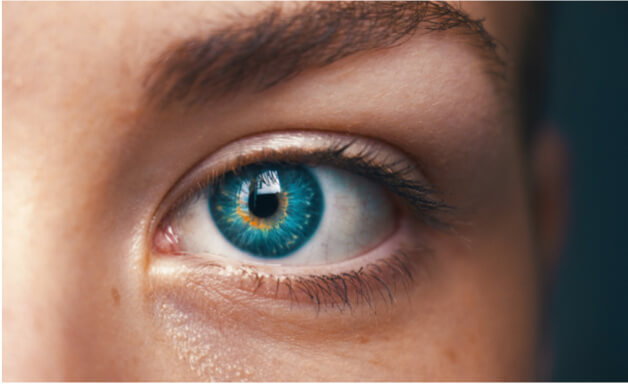Risk Factors
Risk Factors
Blood clots can either be provoked or unprovoked. Provoked blood clots are associated with known risk factors, while unprovoked are those where no obvious risk factor can be identified. Most blood clots diagnosed are provoked, the commonest cause being recent hospital admission.
Venous thromboembolism (VTE) can affect men and women of all ages, races and ethnicities. People at the highest risk (e.g., people with admitted to hospital, especially those with cancer, having surgery, or with major trauma and/or immobilization) should receive preventative treatments. So people admitted to the hospital should ask about their need for VTE prevention.

Know the Risk Factors
Being in the Hospital
Being in the hospital is a major risk factor for the development of a blood clot. Patients are more likely to develop blood clots if they have decreased mobility due to bedrest or recovery and/or they have sticky blood due to be unwell, and/or if they experience blood vessel trauma due to surgery or other serious injury.
Medical History
A person with a family history of venous blood clots is at a higher risk for having a blood clot. This may be due to inherited disorders that affect blood, making it more prone to clot.
Surgery
Before VTE prevention was started, surgery was a leading causes of blood clots. For this reason, medication to prevent clots and stockings and intermittent pneumatic compression may be given after major surgery.
Cancer
Certain cancers — especially pancreatic, ovarian and lung cancers, and many cancers with metastasis (cancers that have spread) — can increase levels of substances that help blood clot, and chemotherapy further increases the risk. Women who are taking tamoxifen or raloxifene also are at higher risk of blood clots.
Bed Rest
Being confined to bed for an extended period after surgery, a heart attack, leg fracture, trauma or any serious illness makes you more vulnerable to blood clots. When legs are in the sitting position for long periods, the flow of venous blood slows and blood can pool in the legs.
Supplemental Estrogen
The estrogen in birth control pills and in tablet (but not transdermal) hormone replacement therapy can increase clotting factors in your blood, especially if you smoke or are overweight.
Immobility
Sitting in a cramped position during long duration ( > 4 hours) travel in an airplane, bus, car or train, slows blood flow in the legs, which can contribute to the formation of clots.
Pregnancy
Blood becomes sticky very soon after conception and remains sticky until about 6 weeks after delivery. The weight of the uterus pressing on veins in the pelvis can slow blood return from the legs. Clots are more likely to form when blood slows or pools.
Obesity
Being weight increases the risk of blood clots, by about 2-3 times. The fat cells produce substances that make blood more sticky
Smoking
Tobacco use as well as increasing risk of cancers, heart attacks and strokes also increases the risk of VTE, especially when combined with other risk factors.
Heart Disease
This increases your risk of a blood clot. Because people with heart failure have limited heart and lung function, the symptoms caused by even a small pulmonary embolism are more noticeable.
Age
Although blood clots can occur at any age, the risk of blood clots increases with age, because blood gets more sticky
Mental Health Matters
A blood clot diagnosis can feel lonely. Having a blood clot can be a life-altering event. Research shows that in addition to physical symptoms (such as pain or swelling), patients may experience a range of mental health issues after a clot, including anxiety, depression and post-traumatic stress disorder (PTSD).
Page references:
1 Jha AK, Larizgoitia I, Audera-Lopez C, Prasopa-Plaisier N, Waters H, Bates DW. The global burden of unsafe medical care: analytic modeling of observational studies. BMJ Qual Saf 2013; 22;809-15. Retrieved from: http://qualitysafety.bmj.com/content/22/10/809.full.pdf+html
2 US Department of Health and Human Services. Surgeon General’s Call to Action to Prevent Deep Vein Thrombosis and Pulmonary Embolism 2008. Available at: http://www.surgeongeneral.gov/topics/deepvein.
3 Heit, JA. Poster 68 presented at: American Society of Hematology, 47th Annual Meeting, Atlanta, GA, December 10-13, 2005.
4 Cohen AT, Agnelli G, Anderson FA, et al. Venous thromboembolism (VTE) in Europe. Thromb Haemost. 2007;98:756-764.
5 House of Commons Health Committee Report on the Prevention of Venous Thromboembolism in Hospitalised Patients. www.publications.parliament.uk/pa/cm200405/cmselect/cmhealth/99/9902.html.
6 Medscape. Medscape General Medicine. 2004:6(3)5.
7 According to data from the international studies (Voskanyan J.E. et al, Organization standardized prevention of venous thromboembolic events in a multidisciplinary hospital, Surgery Volume 08-N2-2006, on average the frequency of hospital deaths from PE stands at 0.3%



